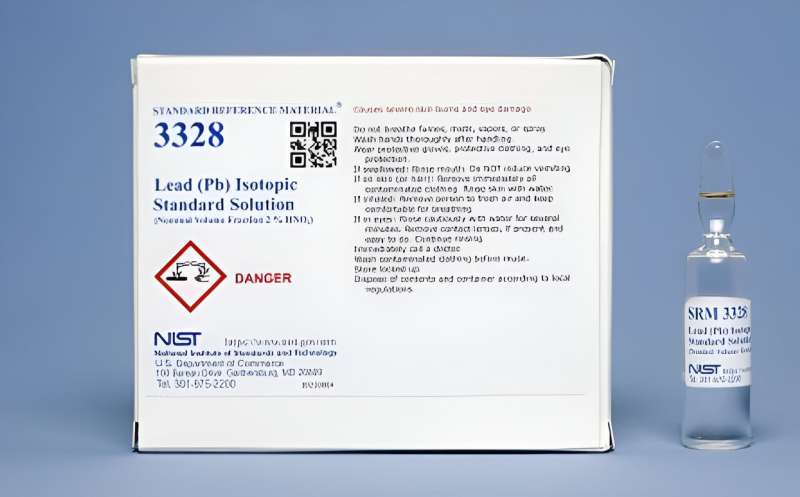This article has been reviewed according to Science X's editorial process and policies. Editors have highlighted the following attributes while ensuring the content's credibility:
fact-checked
trusted source
proofread
A lead isotopic standard for instrument calibration

Stable isotope analysis is an important interdisciplinary tool used by numerous fields such as nuclear and homeland security, forensics, medicine and pharmaceuticals, human health and nutrition, and climate science. Achieving reliable metrology and traceability in isotope analysis is critical as improved isotope measurements allows for advances leading to, for instance, faster conclusive analysis of forensic evidence and confidence in legal proceedings; more rigorous drug, food, and flavor authentication and identification of counterfeits; and improved understanding of mass flux in natural systems to more rigorously guide models used for remediation/mitigation and policy‑making for improved health.
It has been determined, from a workshop held at NIST, that a new generation of isotope Standard Reference Materials (SRMs) is needed to address the growing needs of modern isotope ratio measurements. Because the traceability of high precision, high accuracy isotope ratio measurements and δ-scale measurements can only be ensured through an actual artifact standard, SRM 3328 was developed. This SRM, produced from SRM 981 lead (Pb) wire, is intended primarily as an isotopic reference material for instrument calibration and to correct for mass bias in Pb isotope ratio measurements on a mass spectrometer.
Additionally, this SRM defines the Pb SRM 981 isotope-delta scale (δxPbSRM981) for relative isotope ratio measurements of Pb, R(206Pb/204Pb), R(207Pb/206Pb), and R(208Pb/206Pb).
A unit of SRM 3328 consists of two 10 mL sealed borosilicate glass ampoules containing a solution of approximately 10 mg/kg Pb. The solution consists of nitric acid at a volume fraction of approximately 2 %, equivalent to an amount-of-substance concentration (molarity) of approximately 0.47 mol/L.
Provided by National Institute of Standards and Technology
This story is republished courtesy of NIST. Read the original story here.





















